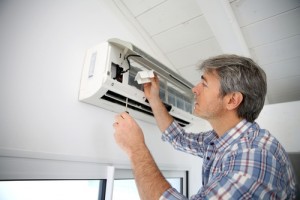 Service HVAC Equipment and Ductwork
Service HVAC Equipment and Ductwork
Schedule preventive maintenance annually for heating and cooling equipment. Technicians perform important tasks, such as checking the thermostat, changing the filter, testing the on/off cycle, cleaning the blower motor and much more. While the technician is there, ask to have the ductwork inspected for loose connections and leaky joints.
Seal Air Leaks With Caulk
Use caulk to fill in the gaps between foundation and siding, roof overhang and house, and window and frame. Make sure surfaces are clean and dry before applying caulk, then apply in one continuous stream. Push the caulk deep into the crack to seal it as completely as possible.
Add Weatherstripping to Windows and Doors
A sliding window or swinging door should make firm contact with the frame. If you can see a gap, air is leaking and wasting energy. Clean the surface and measure the length of weatherstripping you need. Peal the sticker off the adhesive side and stick it to the frame. Now when you close the window or door, it should compress the weatherstripping for a tight seal.
Boost Insulation
Add insulation in three places. First is the attic, where several inches of insulation act as a blanket to keep conditioned air inside where you want it. Second is any ductwork traveling through unconditioned spaces where insulation reduces heat transfer through the ductwork walls. Third is the water heater where insulation minimizes standby heat loss.
Weatherproof the Exterior
Clean away dead leaves from the gutters and check the condition of the roof. Schedule roof repair if shingles are missing to prevent damaging leaks the next time a storm hits. Clean out window wells, store firewood away from the house and trim tree branches so they don’t hang over your roof.
For more tips to weatherproof your home, contact Rodenhiser Plumbing, Heating & Air, serving the Route 495/128 area of Norfolk MA for 80 years.
Image via Shutterstock.com